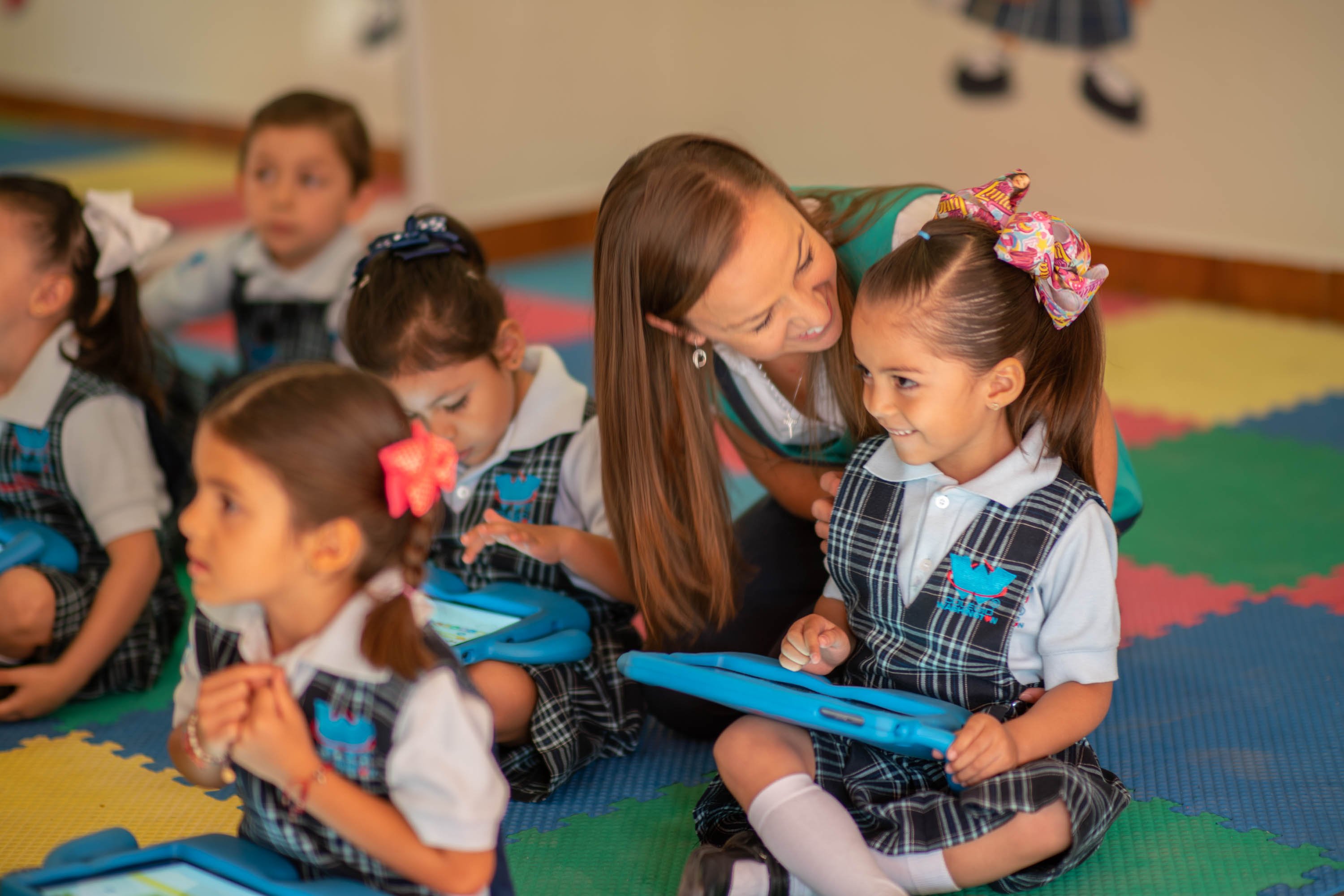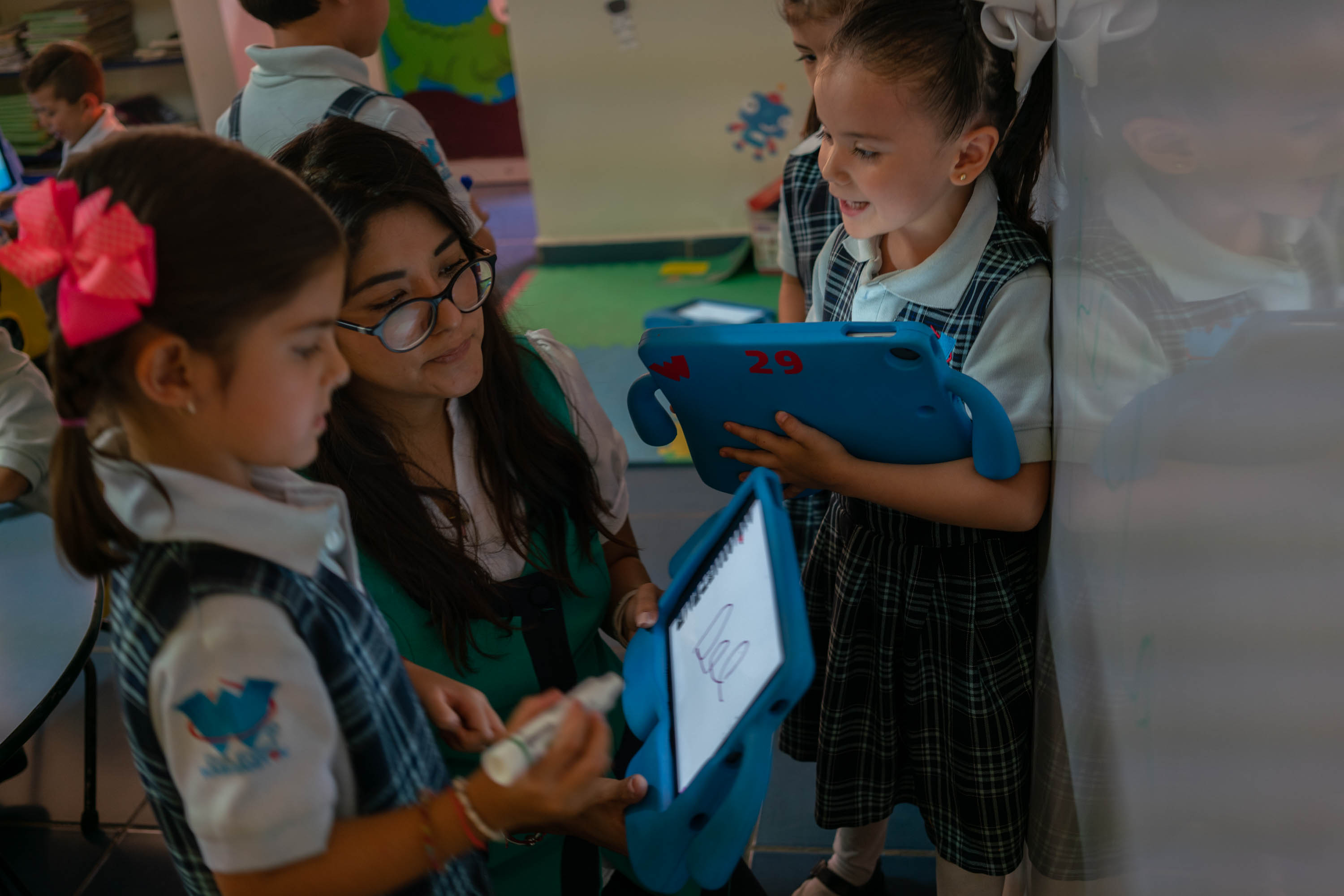We are living in the era of changes and innovation. Technology is changing the way we live, the way we think, and also the way we learn. Recently, a kid’s education has been evolving around this concept and learned to adapt itself for the sake of our children. That’s why education is in constant actualization, preparing them to take on the world of tomorrow, face the challenges in our environment, and become the best version of themselves.
In this article, we take a look at some of the important skills and key points that your child should be learning in school and that are important for the 2020-2024 educational models.
The 10 aspects for the future’s education
- Technological Literacy
- Problem solving
- Hybrid Education
- Apps for education
- Project based learning
- Flipped classroom
- Creativity and artistic appreciation
- Competency-based learning
- Personalization
- Gamification
1. Technological Literacy
Today’s children may need to be exposed to new technologies, as soon as they are ready to accept them and interact with them. The sooner the better.

This is because they are growing up in an age of unprecedented technological advancement, with information all around them and new advances day by day. Being able to learn and keep up with fields such as robotics and machine learning, that will become important to their development and professional future.
It lies on a good school to provide opportunities for its students to interact with new technologies, and integrate them into everyday learning in the classroom.
Information and Communication Technologies are increasingly relevant in the educational field, and they also provide many advantages in the learning process.
This aspect of a kid’s education refers to the ability to use knowledge, facts, and data to effectively solve problems.
2. Problem solving
Problem solving and critical thinking help students in education because rather than relying on teachers and classroom time for instruction and guidance, students with critical thinking skills become more independent, self-directed learners.
Critical Thinking is not only important inside the classroom, but it is a very important ability in life. It helps you to think creatively and “outside the box”.
3. Hybrid education – Future Educational Models:
Hybrid education consists in a combination of online and traditional classroom instruction, as this is the latest trend in educational models all around the world.
This 2020, the world experienced a great change due to the global pandemic. Every school in the world had to adapt their model and started to impart digital courses in order to continue forming their students.
Classes are a carefully planned blend of both traditional classroom learning and online learning activities.
In other words, hybrid classes combine the best of both styles of educational models. Here, students are able to make a meaningful connection with their instructors, and it gives the chance to other students to have access to education more easily as they are no longer required to travel to campus on a regular basis in order to attend courses.
4: Apps for education
The use and implementation of technology inside the classroom in the form of tablets, as well as smartphones, help students study more efficiently and to perform better in classes.
These gadgets can be equipped with some educational apps and can be a useful tool to aid learners in the process.



While students benefit by getting more practice and review, teachers can use these apps as teaching aids and interactive materials.
5. Project-based Learning
Project-based learning is an instructional approach designed to give students the opportunity to develop knowledge and skills through engaging real life projects, set around challenges and problems they may face in the real world.
Project Based Learning will allow students to:
- Improve their abilities to retain and recall information.
- Address real-life issues that require real-life solutions.
- Talk about their ideas and challenge each other in a constructive manner.
- Build transferable skills based on teamwork and collaboration.
6. Flipped classroom
Flipped classroom is a “pedagogical approach in which direct instruction moves from the group learning space to the individual learning space, and the resulting group space is transformed into a dynamic, interactive learning environment where the educator guides students as they apply concepts and engage creatively in the subject matter”
– (The Flipped Learning Network, 2014)
This method helps students to develop self-learning skills and investigation, as they become “the teachers” of a specific subject.
7. Creativity and artistic appreciation
Creativity has always been an important tool for the workforce, but in the future working environment it will become even more essential.
A good curriculum will have students engaged with their studies, and encouraged to develop creative solutions and approaches.
Today’s schools should offer and develop creativity activities inside and outside of the classroom. Look for schools that offer extracurricular activities to develop integrally your children.



8. Competency-based learning
Competency-based learning refers to systems of instruction, assessment, grading, and academic reporting that are based on students demonstrating that they have learned the knowledge and skills they are expected to learn as they progress through their education.
It also leads to better student academic and personal outcomes, because the pace of learning is customized to each student. By enabling students to master skills at their own pace.
9. Personalization
Personalized learning is something that has been neglected for many decades. However in the 21st century, institutions and teachers are aware of the needs of each and every one of their students.
Promoting personalized learning has many benefits for students, since by identifying weaknesses, areas for improvement and strengths, teachers are able to design methods that reinforce children’s knowledge and thus generate strategies for their optimal learning.
This also reminds us that not every child learns the same way. We have to find ways to adapt every kid’s education to every kind of learning, so we can impulse our children to reach the same level no matter their weaknesses and strengths.
10. Gamification
Gamification is adding game mechanics into nongame environments to increase participation. ¿Who said learning can’t be fun?
With this learning technique students are able to learn while they are almost “playing”. Gamification is about transforming the classroom environment and regular activities into a game. It requires creativity, collaboration and play.
So what’s next for education?
Now you know everything about the aspects for a kid’s education in the next years, and the skills children must develop in school to succeed professionally and personally. In Colegio Washington, we invite you to click on our button and discover how to choose the ideal School.


